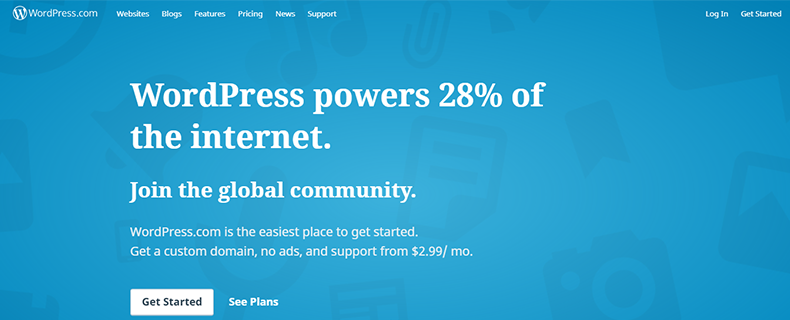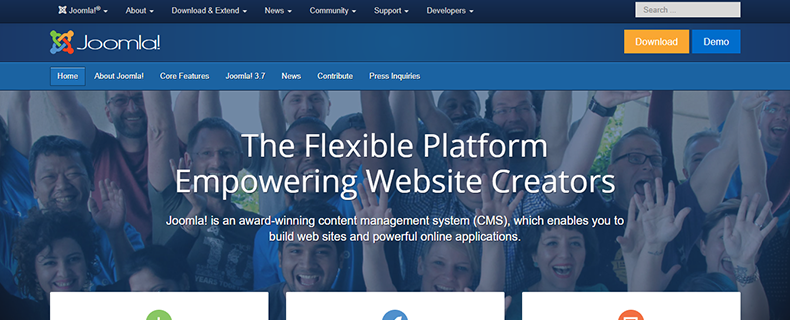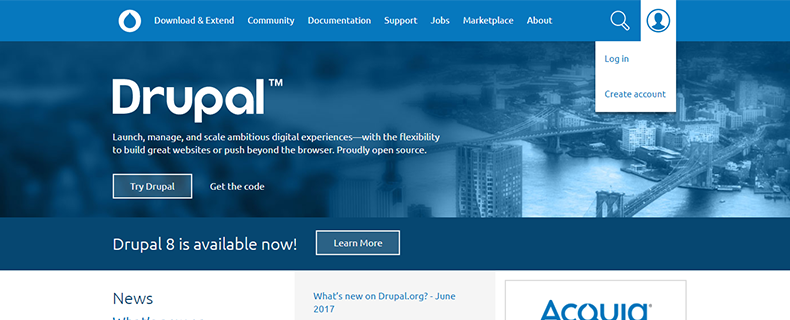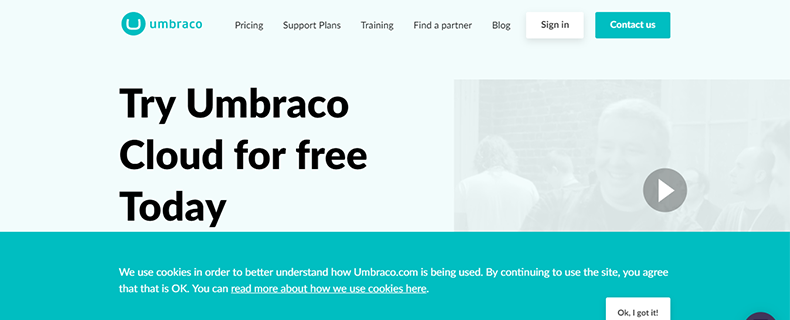
Planning to design a website by your own or a developer? Choosing a platform for website development may be bothering you. Well, if your website is based on content first design, then opting for a CMS platform is the better choice.
Wait, what is CMS? It doesn’t stand for Center for Materials Simulation. Basically, it is a web application that provides functionalities such as administration, control panel or website management services. Everything related to creation and editing of websites and making the task of maintaining the website as intuitive as possible. It may consist of themes, templates or plugins to extend functionality.
Whether it is your own project or your client’s project, get the one that is flexible and powerful. Building a custom website on greater expense can have an immense effect on your business in future, whereas there are some open-source content management systems that are easy to maintain and freely available. Each content management system has its own plus and downs. Despite whatever type of website you’re creating, there will be a CMS which is best suitable. For making your task and choice between the best content management system (CMS) simple, we have analyzed the best performing according to the trends and reliability standards.
WordPress

A couple of years ago, WordPress was considered mainly a platform for blogging, but in present it is considered as CMS with multiple non-blog websites, building mobile applications and social networks with plugins like BuddyPress.
With the fact of WordPress being an easy and convenient system to use, it has become a household name among CMS. Percentage of all websites globally that use WordPress is 27.5%, 50-60% is WordPress’ share of the global CMS market – making it the most popular CMS of them all.
WordPress is not only easy to learn for beginners, but it offers a quick and easy installation. To transform WordPress into a forum, social network, e-commerce site, there are thousands of plugins, themes, and widgets available to extend its functionality. It offers built-in services for blogging or multi-blogging from a single core installation. 8% of the top 100 blogs according to Technorati are managed with WordPress.
Since WordPress is pleasant to work with and flexible to design, most startups and mobile applications have transferred to WordPress. Without any security measures, it can be vulnerable to attack. Only user forums support, no official support.
Forbes and Sony use WordPress as their content management system.
Joomla

An open source platform, being the second most used as content management system. It is mainly best suitable to built small business websites irrespective of the size of your business. It provides 64 languages and becomes a supportive multi lingual CMS platform. There are thousands of extensions and plugins for extending functionality, so can be used for reservation systems, inventory control systems, business directories, informative, corporate and much more.
It is more suitable for people having a challenging coding skill. It becomes clumsy, as it offers basic level SEO functionality, you have to hire SEO expert to make it work. With Drupal, you can manage a WordPress combined website.
Companies like Harvard University, MTV, IHOP, The Guggenheim Museum and Foundation, Citibank, etc.. are using Joomla as their CMS platform.
Drupal

Drupal is a free and flexible content management system with a large and active community. It is a heavier platform compared to WordPress or Joomla which makes it less user-friendly for non-developers. It offers over 30,000+ modules and 2,000+ unique themes that help to build user blogs, forums, OpenID and more. One of the most famous features of Drupal is Taxonomy module for multiple levels and different categories for content types. It’s theming system is complicated and not beneficial for simple sites.
Drupal is being used by companies like Popular Science, Sony Music, Fast Company, Ubuntu, White House, New York Observer, Grammy, and many others.
Magento

Magento is designed more preferably for eCommerce sites. Magento won’t disappoint you whether it is a small business solution or a professional enterprise solution with a large range of products. It was developed by Varien Inc. and sold to eBay. It supports multiple currencies and languages. It offers three edition. The two options Enterprise Cloud and Enterprise editions are for larger-scale websites. It supports tools for SEO and for management & control over the appearance of products. The enterprise edition is bit costly, while community edition is free. Requires higher operational cost and heavy server resources.
It is used by companies like Nike, Bulgari, Nestle Cort, Burger King, Zumiez Liver Pool FC Chopard, Gant etc…
Umbraco

With Umbraco, designers & developers get full control over design aspects to customize the back end with custom applications & focuses on web-standards. Whereas, it has an open API to access every aspect of Umbraco. It allows integrating flash and Silverlight content into the site. The primary extensions are paid. No pre-built themes available to try, before you download.
It is used by ABBA and Heinz sites.
Conclusion
There are various things you should consider when choosing a content management system. Filter it with your requirements and the aim of the website.
Do you have any favorites among this list? Is there a CMS that you felt should be included with these? Let us know in the comments below, and if you find this article useful, then please share, subscribe or like it.



